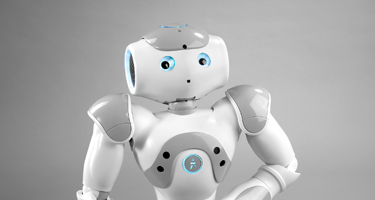Some artists paint with pigment and texture, others sculpt with clay and stone, some perform with voice and instrument; some just happen to use microcontrollers and digital multi-meters. Robotics has been the major new art form for the 21st century. Eventually robots will become commonplace but for now they are rare and provoke strong emotional responses. It is a fertile ground for artists; lots of social experiments, room for technical improvement and opportunities to demonstrate creativity. It is street-theatre; the main pre-requisite passion; the outcome as diverse as any ecosystem. Not only are robotic art, but any art form with the potential to recognize itself at which point it will achieve a form of humanity; to recognize itself and ponder its own obsolescence. Artists have been fascinated with robot capabilities, such as manipulation and locomotion, because of their precision and speed. Industrial robot arms have been programmed to draw, or to perform with dancers. There is also a growing interest in human-like robots and insect-like robots. In recent years this interest has heightened with robotics and associated technology being represented in many contemporary works of art. Arts technology is maturing and becoming an integral part of everyday life. Reciprocally, robotic art is pushing the frontiers of robotic research in many new directions processes, which is narrowing the socio-cultural gulf between the technologies and its end users, the society at large.
Gangnam Style
In a reversal of common belief and expectation, the boundaries of technological applications appear to be pushed not so much by relevant science or engineering but artists. One example is certainly the social virtual reality of Second Life, which was explicitly created to mimic the Metaverse described in Neal Stephenson's 1992 novel Snow Crash. A leading role for art is also evident in human-centered robotics. When it comes to fathoming the depths and shallows of our future dealing with our new companion, the robot, artists have jumped the queue ahead of technical and commercial realization and have introduced robots into our lives. While there is an abundance of fiction literature and movies with robots as protagonists, here we refer to the performance art that have integrated robots in some way or another in their performances or even made the robot the work of art itself.
A good example is the enduring reappearing robot human symbiosis in the work of Australian performance artist, Stelarc. In such manners, artists ask questions about the future directions of robotics before the field itself might have become aware of them and have also envisioned robots that are yet to come. Another example lies in Carnegie Mellon University, which has launched arts-based robotics programs to increase technical literacy in the Pittsburgh region for four years. This establishment not only encourages individual efforts to connect art concepts with artificial intelligence, but also emphasizes educational and creative opportunities in robotics.



